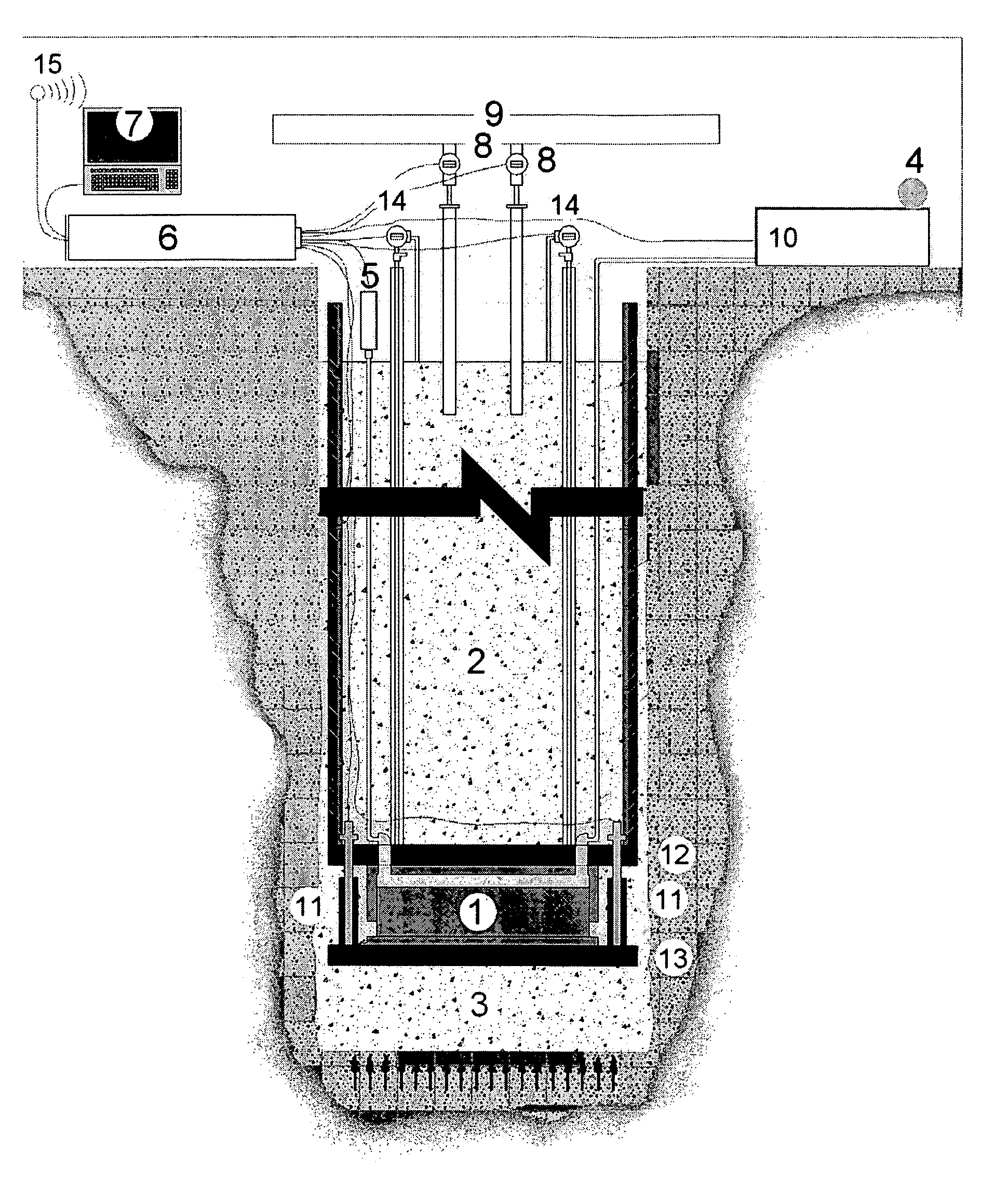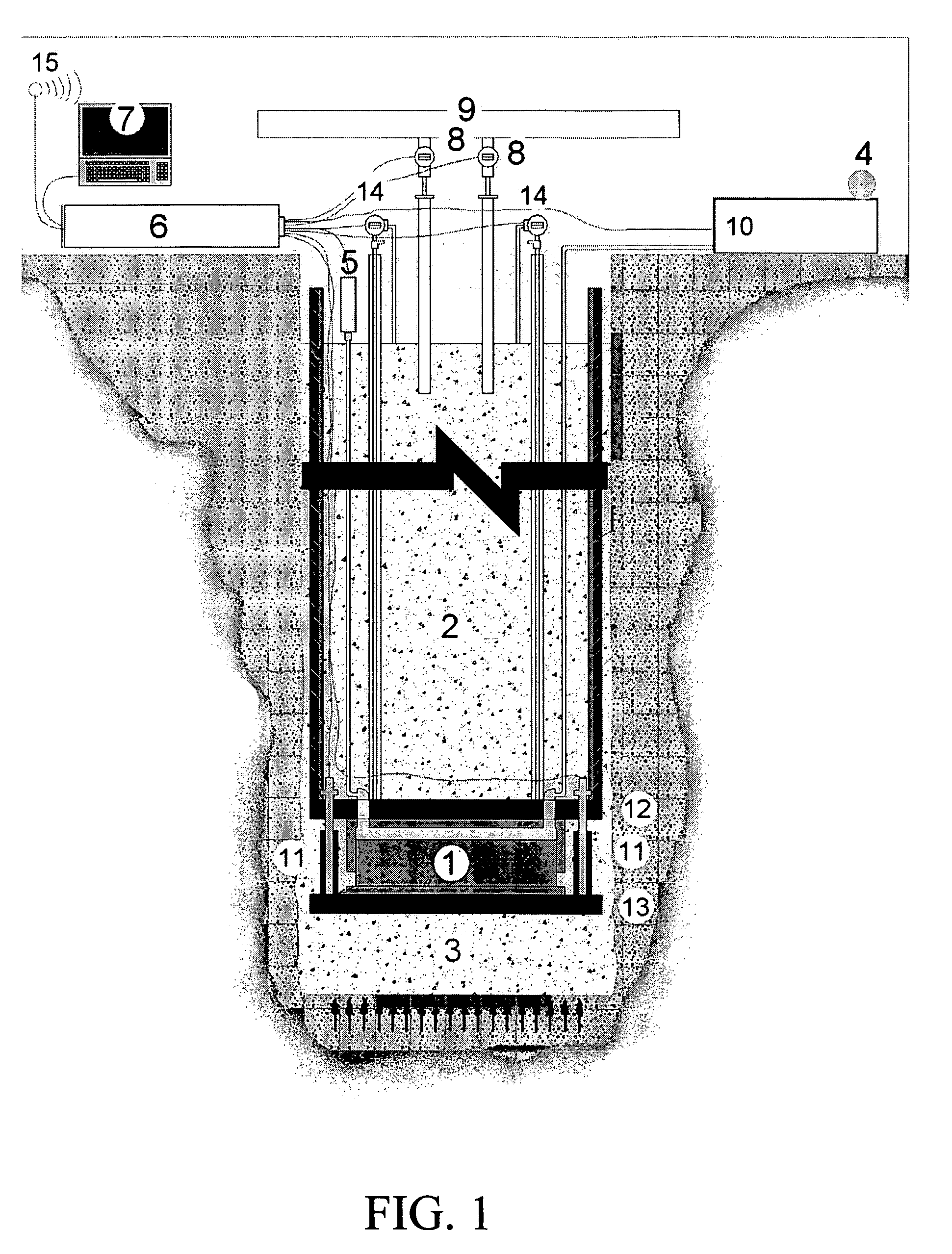Method and apparatus for automatic load testing using bi-directional testing
a technology of automatic load testing and bi-directional testing, which is applied in the direction of mechanical measurement arrangements, instruments, and mechanical means, etc., can solve the problems of high cost of static load testing, significant danger to operating personnel, and inability to work alone for a single operator
- Summary
- Abstract
- Description
- Claims
- Application Information
AI Technical Summary
Benefits of technology
Problems solved by technology
Method used
Image
Examples
Embodiment Construction
[0051]The subject invention pertains to a method and apparatus for automatic load testing of a foundation element using bi-directional testing. The subject invention can be applicable to any foundation element in the ground to support structural loads, such as a diaphragm wall, berrettes, or a pile as described in the embodiments of the subject invention. The subject invention can incorporate a means to apply a test load to a pile. In a specific embodiment, the means to apply a test load can incorporate a load device. In an embodiment of the subject invention, a load device is located between two sections of a pile such that the pile is split into a first pile element above the load device and a second pile element below the load device. The pile can be, for example, bored cast in-situ concrete, driven precast concrete, or driven steel tubular piles. For the steel tubular piles, steel tubes can be driven or pushed into the ground, concrete can be poured in, and then the steel tubes ...
PUM
| Property | Measurement | Unit |
|---|---|---|
| time | aaaaa | aaaaa |
| displacement | aaaaa | aaaaa |
| time | aaaaa | aaaaa |
Abstract
Description
Claims
Application Information
 Login to View More
Login to View More - R&D
- Intellectual Property
- Life Sciences
- Materials
- Tech Scout
- Unparalleled Data Quality
- Higher Quality Content
- 60% Fewer Hallucinations
Browse by: Latest US Patents, China's latest patents, Technical Efficacy Thesaurus, Application Domain, Technology Topic, Popular Technical Reports.
© 2025 PatSnap. All rights reserved.Legal|Privacy policy|Modern Slavery Act Transparency Statement|Sitemap|About US| Contact US: help@patsnap.com



